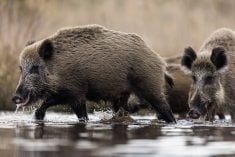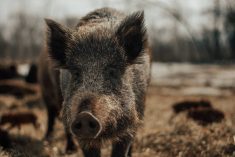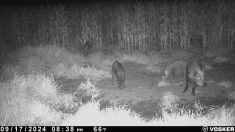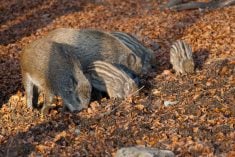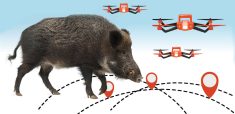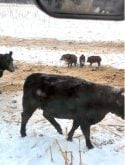Researchers in western Manitoba want to see how DNA monitoring — which can flag the presence of an invasive species before any are actually spotted — could be used in the fight against wild pigs.
The pilot project out of Brandon’s Assiniboine College focuses on environmental DNA, known more commonly as eDNA, genetic traces that an invasive species leaves in their environment. Positive results may be the first warning sign that a species has spread into a region (such as the recent finding of zebra mussels in Manitoba’s Clear Lake) and can help inform control efforts.
WHY IT MATTERS: Manitoba has been fighting to beat back invasive wild pigs and the threat they pose to both local ecosystems and agriculture.
Read Also
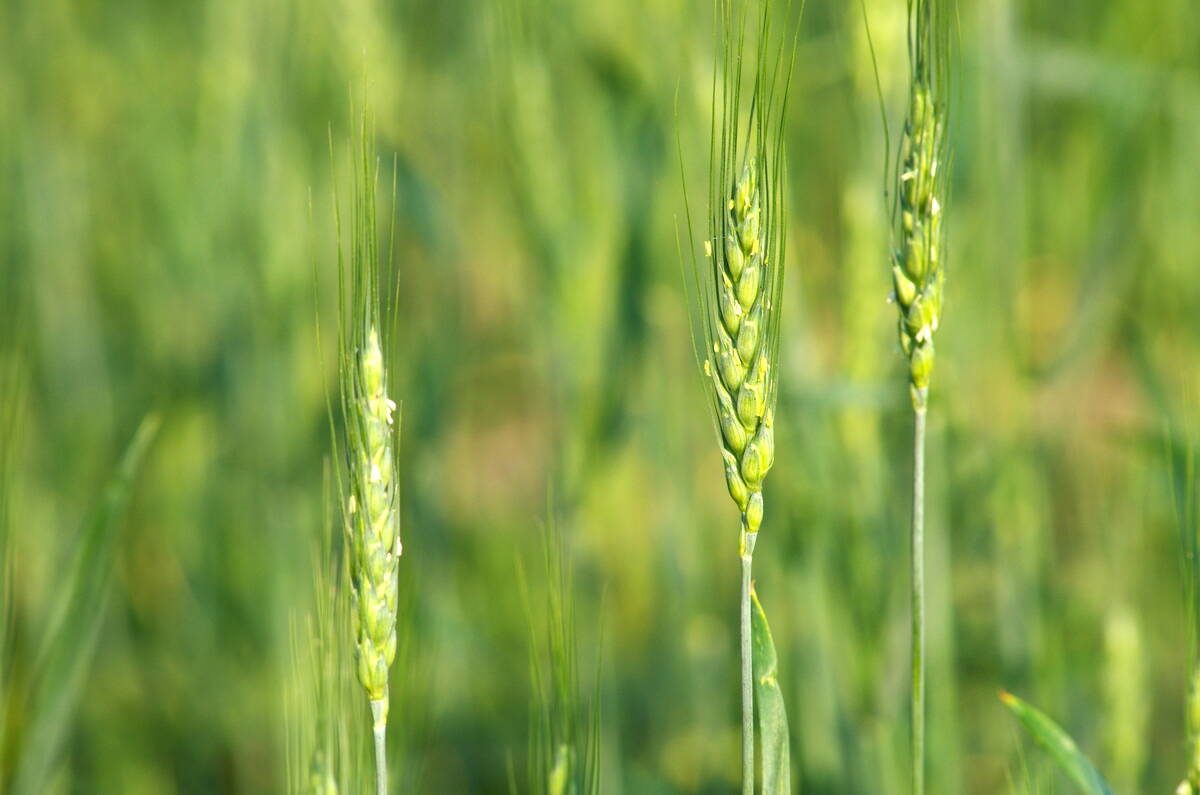
Code cracked on nitrogen-fixing wheat?
U.S. crop breeders have created a wheat variety capable of fixing its own nitrogen rather than relying on fertilizer.
James Hood, researcher with the college’s Russ Edwards School of Agriculture and Environment, is leading the project. Being able to rapidly find wild pigs is essential in control efforts, and eDNA can play a significant role in that, he said.
“It would just be one tool in the suite that people use in detection here. It would augment the other techniques that are being used,” Hood said during the Canadian Wild Pig Summit II held April 29.
The online event was hosted by Animal Health Canada, Squeal on Pigs Manitoba and Manitoba Pork.
Protecting pork from wild pigs
As well as adding a new tool to detect wild pigs, the project is part of an early-stage effort to explore how the method could support disease surveillance in the province’s agricultural sector.
Wild pigs are a problem for livestock health, providing a haven for diseases to hide in. In Europe and Asia, African swine fever in wild pigs has complicated efforts to keep the deadly and economically damaging disease out of pork barns.

African swine fever hasn’t arrived in Canada, although it’s blazed a path through the pork industry in other parts of the world and, in 2021, was found in the Dominican Republic.
If it ever does find a foothold on Canadian soil, wild pigs would be a key wildlife host, Hood noted.
How eDNA monitoring works
Plants and animals continuously shed DNA into the environment. For wild pigs, that might come with the environment’s contact with skin, saliva or other bodily fluid.
“We have some methods that have been developed now that allow us to detect this eDNA, principally from water, or they can also be done from sediment samples,” Hood said.
The result is a relatively low-cost, non-invasive way of finding the animals.
In order to find eDNA, water samples in the lab use a primer, a DNA sequence specific to the type of DNA being targeted (in this case, pig). These sequences bond to DNA present in the environment. Scientists use PCR (polymerase chain reaction, the same technology used in COVID-19 tests), to make copies of the bonded DNA until there is enough present for a positive result.

The technique is highly sensitive and can pick up DNA present even at low levels in the environment.
Each “amplification cycle” doubles the DNA, Hood noted. The lab was able to detect eDNA after 29.75 cycles. The project considered DNA found within 35 cycles to be a positive result.
“The system is extremely sensitive, to the point where the lab is confident that if there were as few as four copies or four strands of DNA present in that sample, we would be able to pick it up,” Hood said.
The technique can’t, however, tell the difference between domestic and wild pigs. That’s where further investigation comes into play.
“We’re not at that point yet, where it’s 100 per cent reliable,” Hood said. “We need to do some repeated sampling in order to be able to have some more confidence that we would have a positive sample, or, just as important, to have some confidence that they’re not in the particular watershed we’re sampling from.”
Nor, he added, is it totally clear how far downstream eDNA can be detected.
Challenges with eDNA
The sensitivity of the system means that its easy to contaminate. Even a small amount of DNA on the researcher’s clothing, in a truck or on an improperly cleaned piece of equipment can result in an error, Hood said. Sanitation is key.
“At the end of each day, we would always do negative control samples to hopefully pick up if we had a problem with our collection technique, it would hopefully then show up,” he added.
Samplers were careful to wear gloves, clean equipment with bleach and then carefully rinse that equipment to ensure samples were both intact and preserved.
Environmental factors also played into how well DNA stays in an environtment. Temperature, sunlight and water turbidity were among those factors. Colder temperatures protect DNA, while exposure to more ultraviolet light degrades it.
“There is some suggestion that eDNA could absorb two sediment particles, which might protect them a little bit and allow them to be detected longer,” Hood said.
Wild pig eDNA test results
Hood hoped his project could fill some of those gaps and offer some insight into appropriate eDNA protocol to identify where the pigs are present and absent.
The team first wanted to confirm that they could discover wild pig eDNA in surface water in Manitoba.
The first step was to get controls and confirm that they did show the expected results. Pig meat was placed in pig-free streams in Riding Mountain National Park for an hour, after which water samples were taken for positive controls. Upstream samples showed no presence of pig DNA. Additional controls were carried out in areas like Spruce Woods Provincial Park, a wild pig hot zone.
Further testing happened at other areas of southwestern Manitoba, including Cypress River.
“We do have some evidence that pigs are in the area from trail cameras in the area, and then also from tracks that we could see adjacent to the sites where we were going to be testing,” Hood said.

Researchers collected 286 samples, 252 of which were non-control. Of those, 58 tested positive for pig DNA, about 23 per cent.
That detection rate wasn’t as high as hoped, Hood said, but it confirmed that pigs could be detected in the environment.
The team’s work used both traditional samples and filter samples, which draw water through a filter paper inside a small cup. The idea is to better capture any particles, including eDNA, for analysis. Filters with four different pore sizes were tested (0.22, 0.45, 1.2, and five micrometers). In each case, water was run through the filter until it clogged, or until 45 litres was collected.
“This is a somewhat labour-intensive and time-intensive process,” Hood noted.
Quicker, traditional grab samples were used as a comparison against the filter method.
All samples then had a buffer solution applied to preserve DNA until samples could arrive at the lab. DNA degrades quickly once samples are taken, Hood noted, and must be preserved promptly using freezing, drying or buffer solutions.
The goal, especially with filter samples, was to collect as much water as possible to detect DNA even at very low concentrations.
“Very interestingly, our grab samples actually had our best success rate, so our simplest and cheapest way seemed to be the one with the most success,” he said.
Of the filter samples, the 0.45-micrometre pore size showed the best success, although different site showed different successes.
Hood also noted that DNA was successfully found in challenging conditions, such as high temperatures and turbidity.
Previous studies suggested DNA would degrade above 7.5 degrees Celsius, but the team found positive results in water as warm as 24 C and in very turbid conditions.
“We found a couple of pig wallows and decided, just for interest, to do a sample there, just to see if the really cloudy water would interfere, and it didn’t seem to,” Hood said.
Positive DNA detections were also made across a range of pH levels. Only one site with slightly more acidic water had no detection, but it’s unclear whether that was due to pH or something else.
Distance DNA detections
At Jackfish Creek in Riding Mountain National Park, pig DNA was detected at various distances downstream after placing pig meat in the water. One day later, DNA was found 1.17 kilometres downstream with all filters, but not with the traditional sample sample. Four days later, detection occurred at the same site via the traditional sample only, and also 6.33 km downstream using the 0.45-micrometre filter and traditional sampling.
At Swanson Creek – Whirlpool River, also in Riding Mountain, DNA was detected 6.9 km downstream two days after placement using the five-micrometre filter. Five days later, DNA was still detectable at the original site via traditional sample and again at 6.9 km using the 1.2-micrometre filter. On day seven, it was detected 16.6 km downstream using the smallest filters (0.22 and 0.45 micrometres).
At Cypress River, samples were collected near a road crossing and a pig crossing point. DNA was detected at the road site on Aug. 7. Two days later, it was found using the five-micrometre filter and traditional sample. On Aug. 22 all filters found DNA, but not the traditional sample and, by Aug. 26, only the smallest filter was returning positive results.
Future of wild pig eDNA testing
One of the things Hood and his team want to evaluate this year is how to identify exactly when the pigs were present, to get a better idea of when the eDNA was introduced into the stream.
“That might give us a little bit a better idea of how long we can detect it,” Hood said.
Filter clogging last year may have prevented the preservative buffer solution from fully penetrating the filter, risking DNA degradation, Hood said.
“So this year, we are going to be pumping a little bit less aggressively. It’s unfortunate, in one sense … because we’re pumping less, if you had an extremely low concentration of DNA in the environment, you might not necessarily pick it up, but we want to make sure that we are able to actually sample anything we collect.”

The team also plans to limit water collection to 10 liters per sample to reduce filter clogging. They’ll also try introducing buffer from both ends of the filter cup to improve preservation and use sterile pre-filtration pads to remove large debris before it reaches the main filters.
Those results will further help determine best practices if eDNA becomes part of Manitoba’s wild pig control efforts.
“Is the higher cost and complexity of the filter samples justified, or do we get just as good results with the grab samples?” Hood asked. “Based on our initial samples, that seems to be what it looks like, but I’m not willing to make that conclusion until we’ve tested it again and dealt with some of our present potential preservation issues here.”




